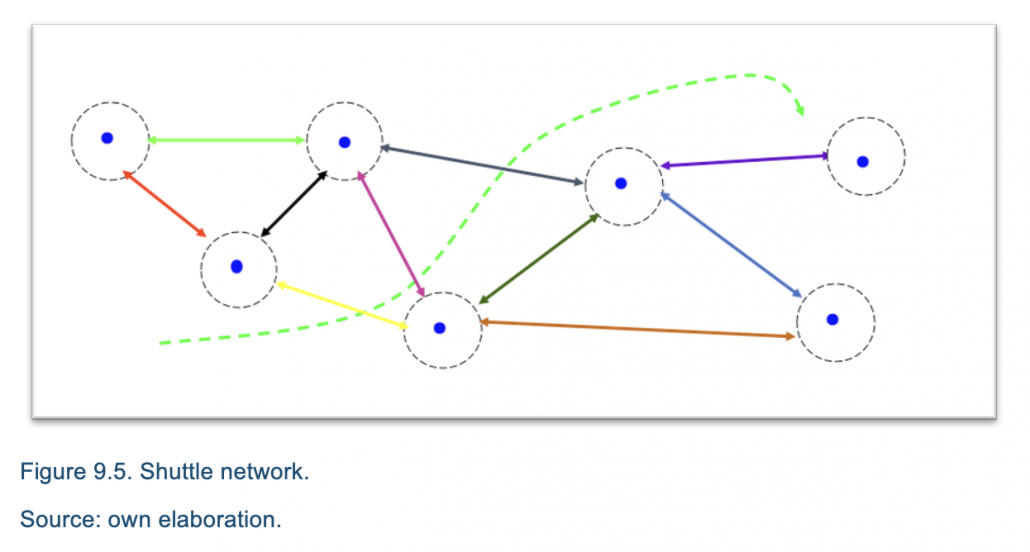From the dynamic development of unitized cargo transport technologies at the turn of the twenty-first century, intermodal/CT of containers, semi-trailers and swap bodies developed very intensively in Europe. These technologies are based on two relative types of CT—sea-land transport of containers and ro-ro units, as well as land (i.e., rail-road) transport of containers and other cargo units (i.e., semi-trailers, swap bodies, and trucks).
Maritime transport is based on regular shipping—i.e., container, ro-ro, and ro-pax lines. Appropriate, deeply specialized vessels carry containers and ro-ro cargo (i.e., semi-trailers, roll-trailers, and trucks) between ports. These ports can be divided into three basic types. The first consists of numerous ports where final cargo arrives (i.e., final destination ports). The second consists of large terminals and transshipment ports (i.e., gateways, hubs), which are gates linking smaller ports and local/regional shipping lines network with overseas shipping lines. The third consists of ports supplementing of road systems through connections by passenger-car ferries, passenger-car-rail, and ro-pax or ro-ro units.
The BSR is one of the most intense sea areas in terms of navigation. There are approximately 4,000 ships operating at one time with more than 350 of these are ro-ro or ro-pax vessels operating exclusively in the Baltic ferry market. Another 350 are container ships sailing in this area as feeder ships or in the short sea shipping scheme.
The second part of the market—rail-road CT serves by way of two forms. First, the sea-land network can be described as hinterland services for shipping based on regular rail services or inland waterways shipping lines. The road section plays the role of the last mile delivery phase. The second part consists of a multi-liner rail service network across the whole of Europe. These services can work as national or international rail connections. Analyzing these types of services, six illustrative examples are derived:
- Shuttle service, where only two terminal are connected by the operator and serviced in a given frequency.

- Antenna-shuttle service, where one terminal is serviced by an operator alternately with two other terminals by ensuring regularity an frequency to the forwarder.
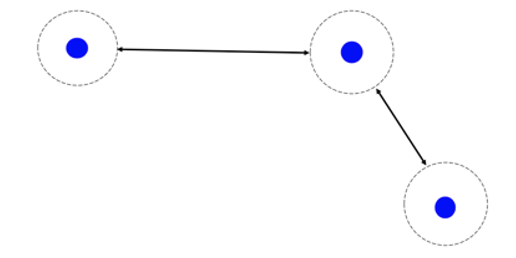
- Y-shuttle service, where one terminal plays a role of marshalling yard for dismantling one train into two separate destinations, and in the opposite option, two cargo rail sets are formed into one set merging several origins of cargo towards one destination.
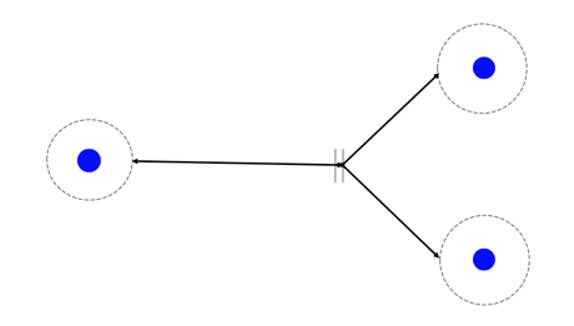
- Linear service, where several terminals are connected in a linear manner, with a regular stops in intermediate terminals. Also, here the given frequency is an obligation of the rail operator.

- Round service, where the train performs regular trips form terminal A to B, than to C and then comes back to A, from where it starts next round trip. It is possible to include more terminals in one round service than 3.
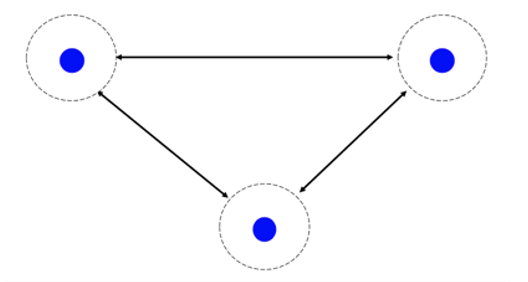
- Aggregating service, where the main criteria of service is cargo collection on the highest possible extend independently from the distance. In other words, the operator allows to trip extension in order to collect more cargo from the hinterland notwithstanding that these terminals are not located on the one rail route.
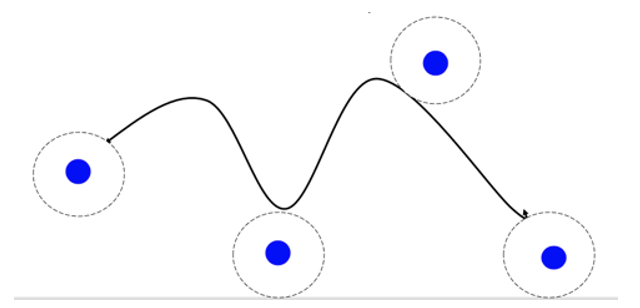
The above types of CT services are flexible and easily replaced by another type due to the cargo volume. A set of such services creates a CT network, i.e., where CT terminals are crucial infrastructural elements that play different roles for the market and for the carrier. Depending on hinterland borders and services, three relational types of CT network can be selected:
- Hub-and-spoke network (Figure 9.3)—where one terminal plays the roles of hub and receives cargo units from two different regions/hinterland areas and exchanges them between each other. The hub function has been developed not only due to national borders, but mainly due to the best location giving the advantage of being effective node in global transport network. In so, the hub function helps to exchange all existing trade relations in one place, for many independent operators and haulers.

- Gateway network (Figure 9.4)—is related more to one-operator transport system. From several terminals included in the CT scheme of a given operator, one plays a crucial role as exchange place, to which all services serving one region coverage delivering cargo destined to another region/area, and mutually, receiving cargo originated from this region destined to the first one. Such type of network is often correlated to the regional differentiation and bottlenecks between regions, where only one place can play the role of interregional exchange node.

- Shuttle network (Figure 9.5)—as a result of advanced CT system of one operator (or several, but cooperating in the framework of one network), where a given number of shuttle services are compiled into a single system. In such, the main issue is to adjust all transit times of trains and terminal arrivals/ departures in order to minimize waiting time at terminal, eliminate yard storage and allow a smooth transit for several trade relations.
